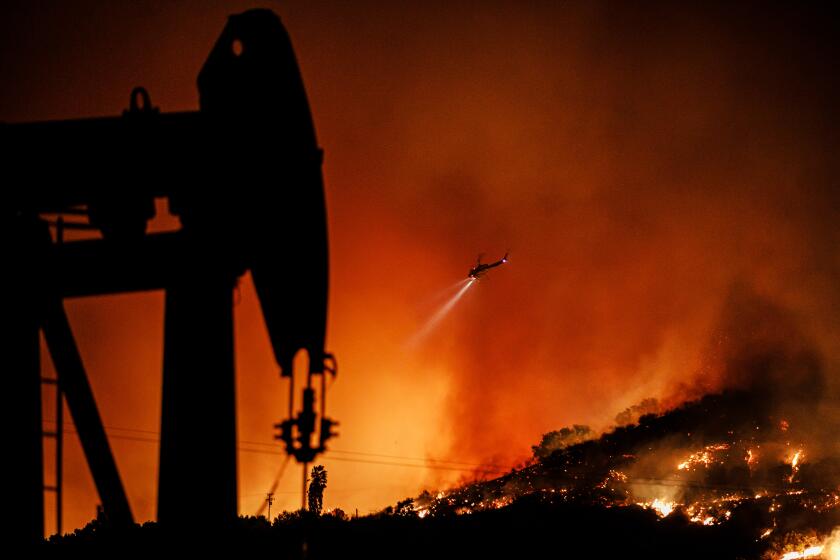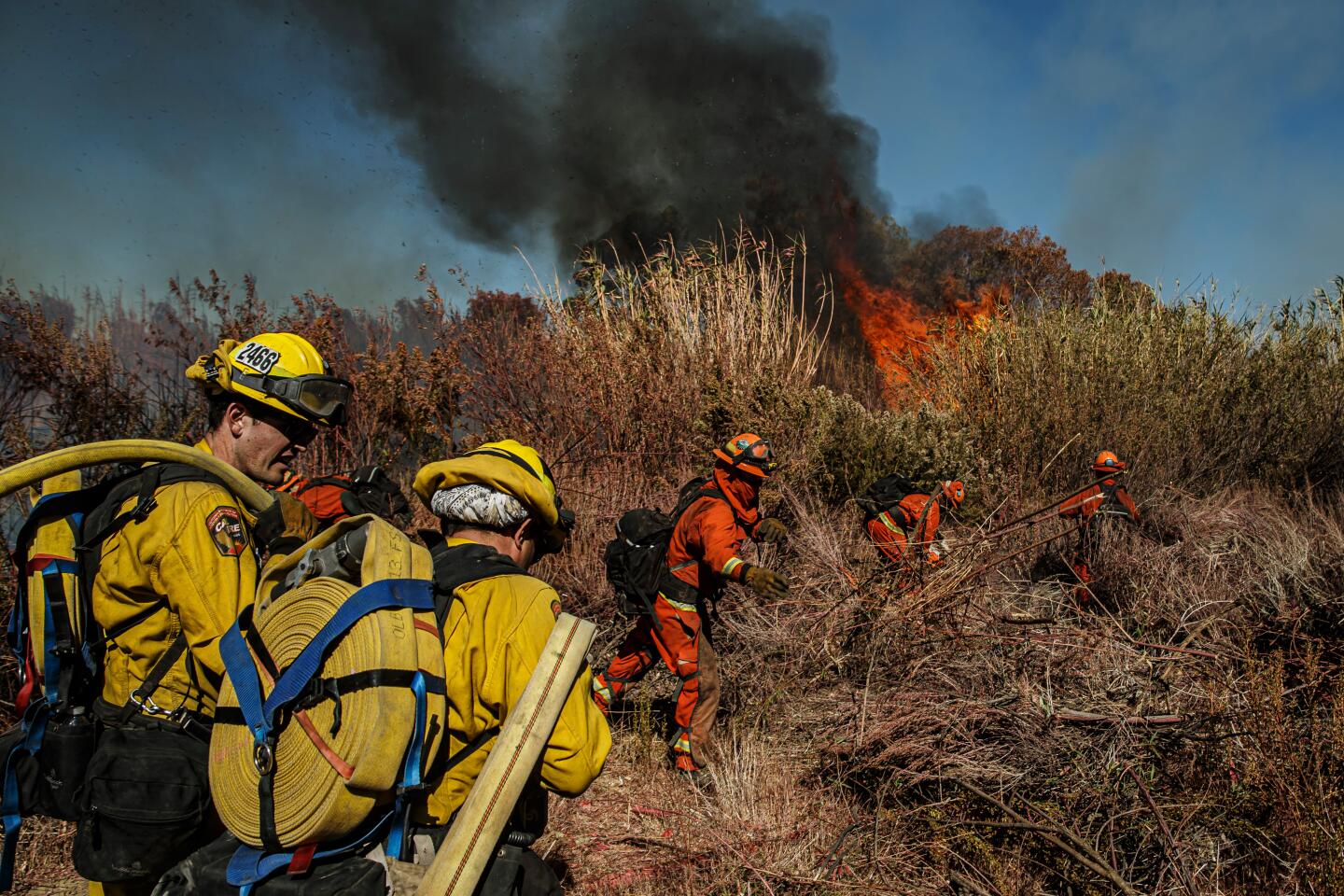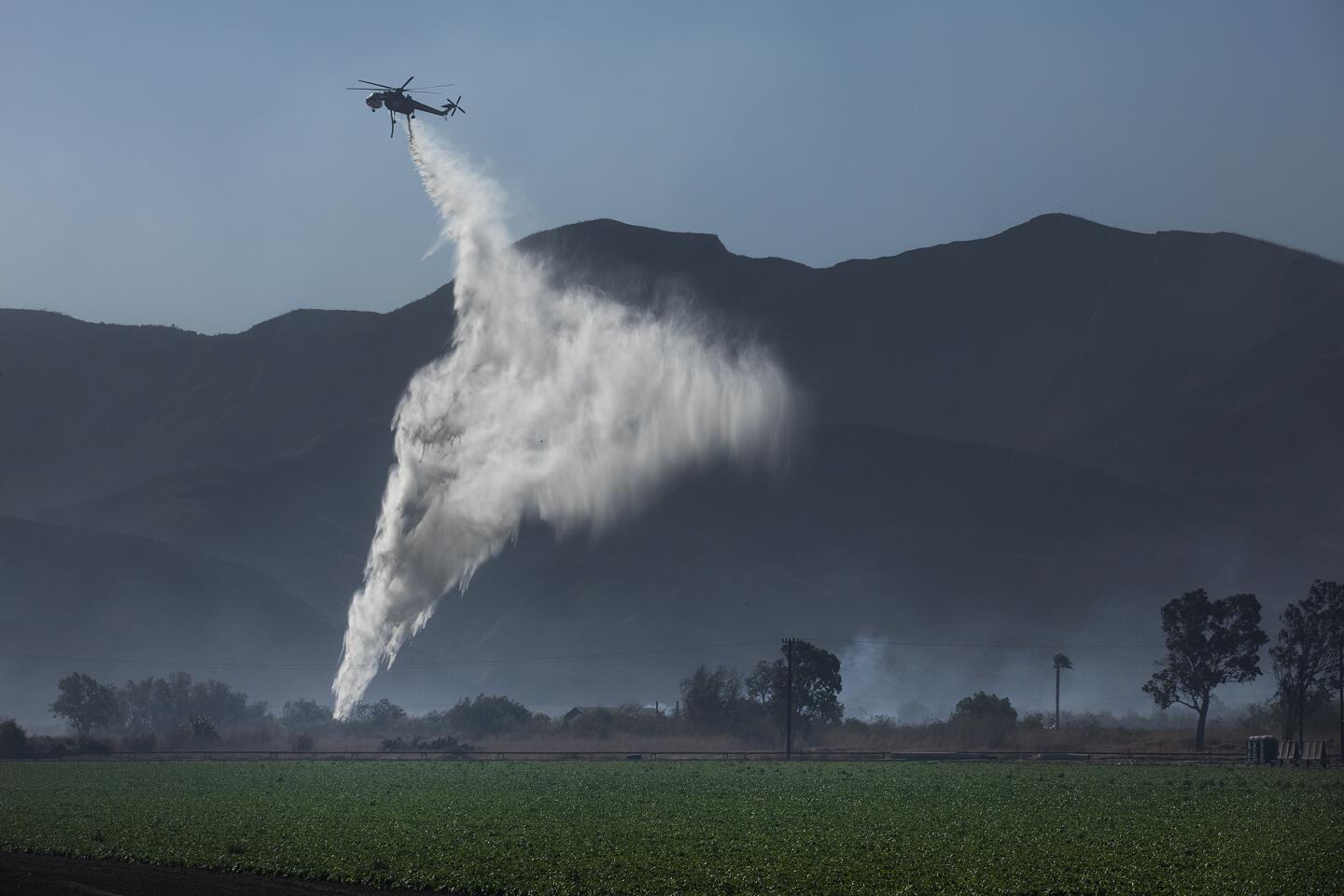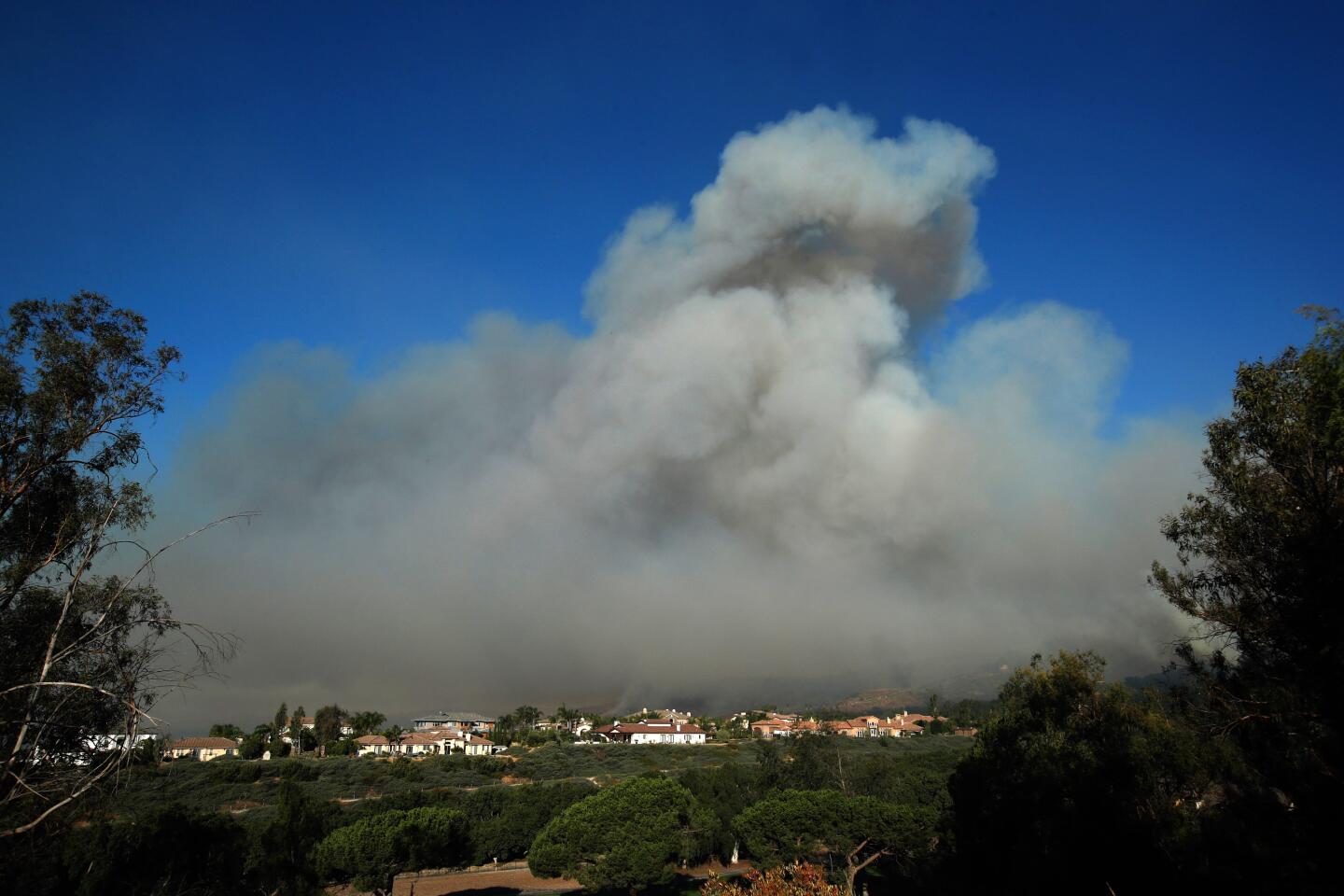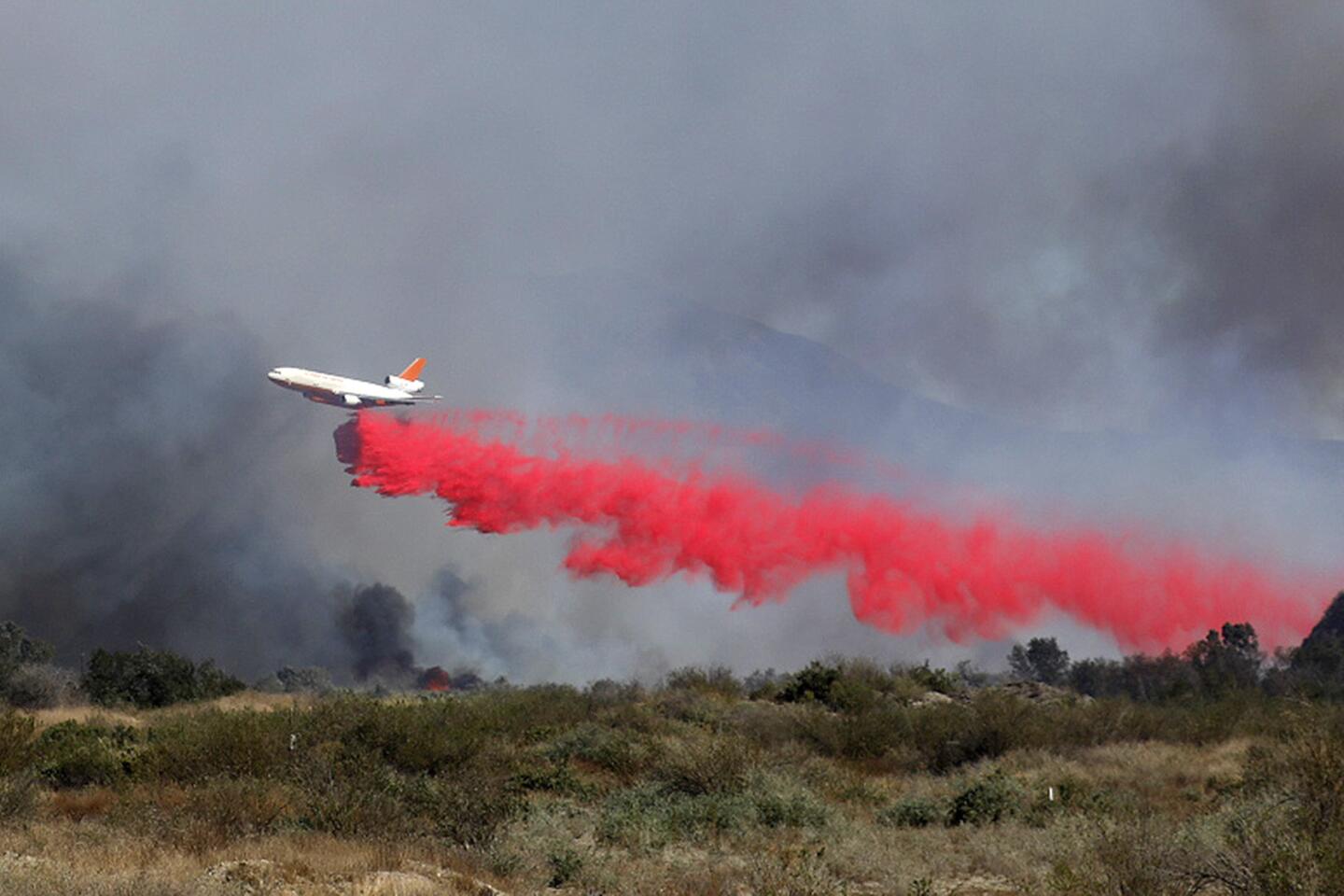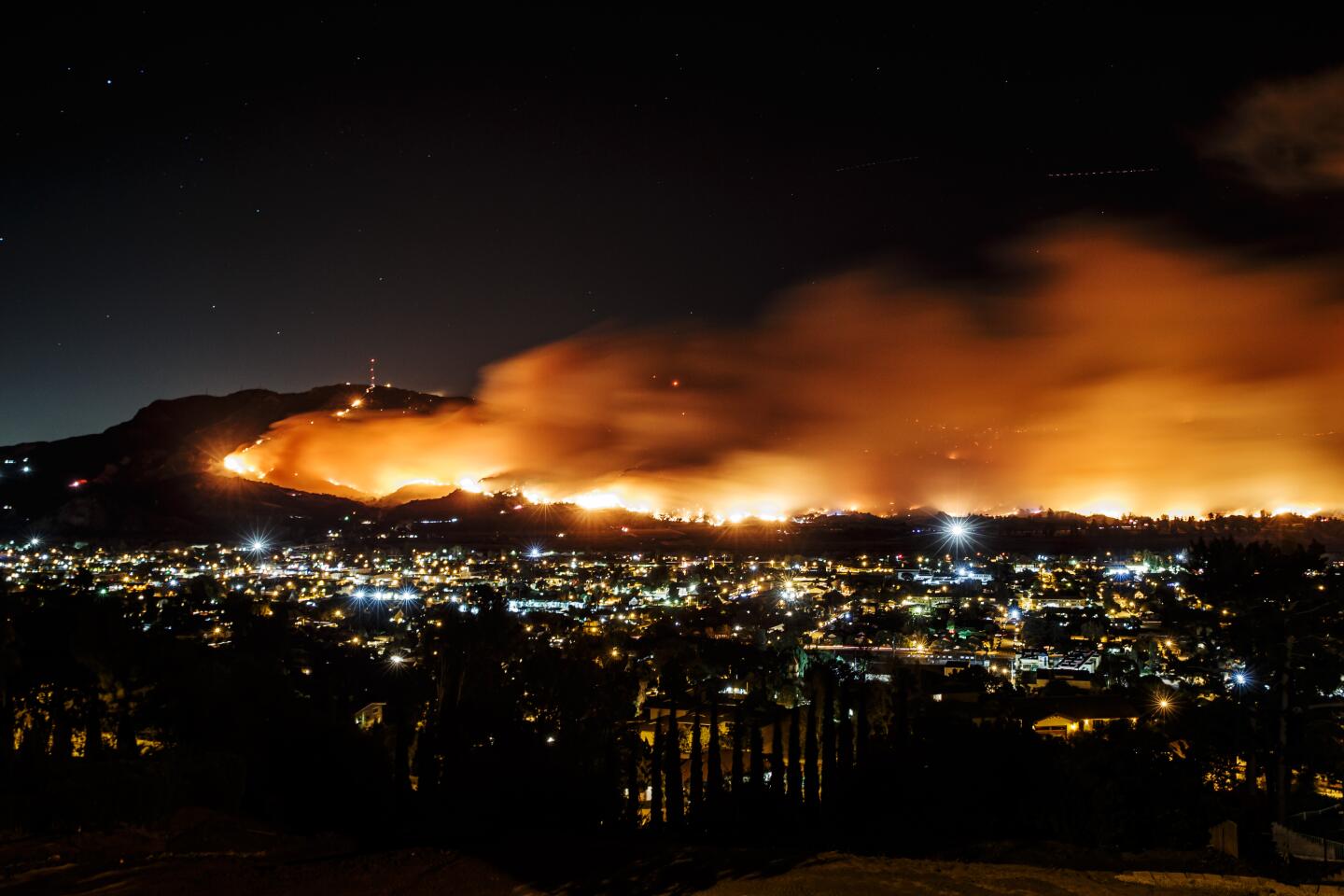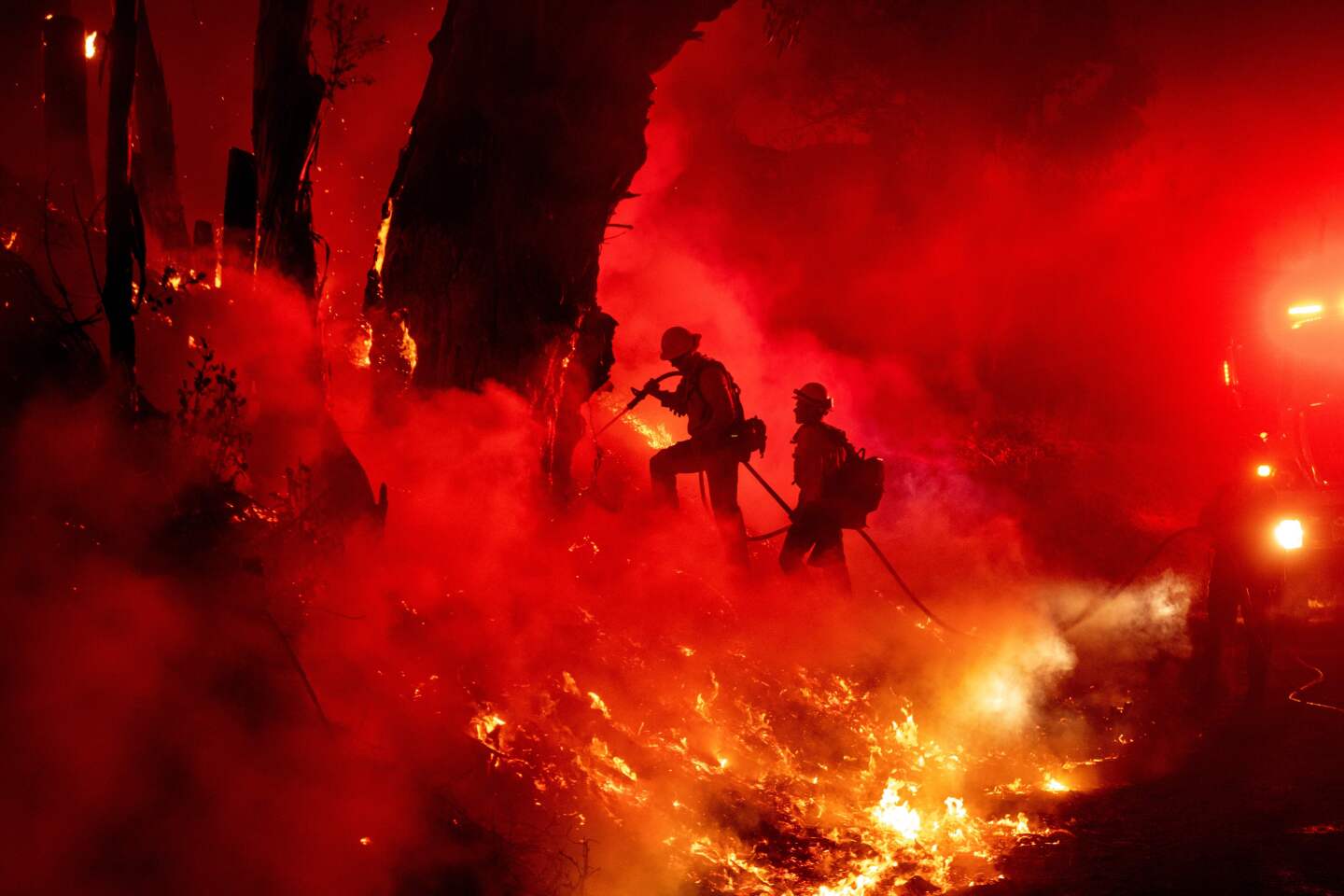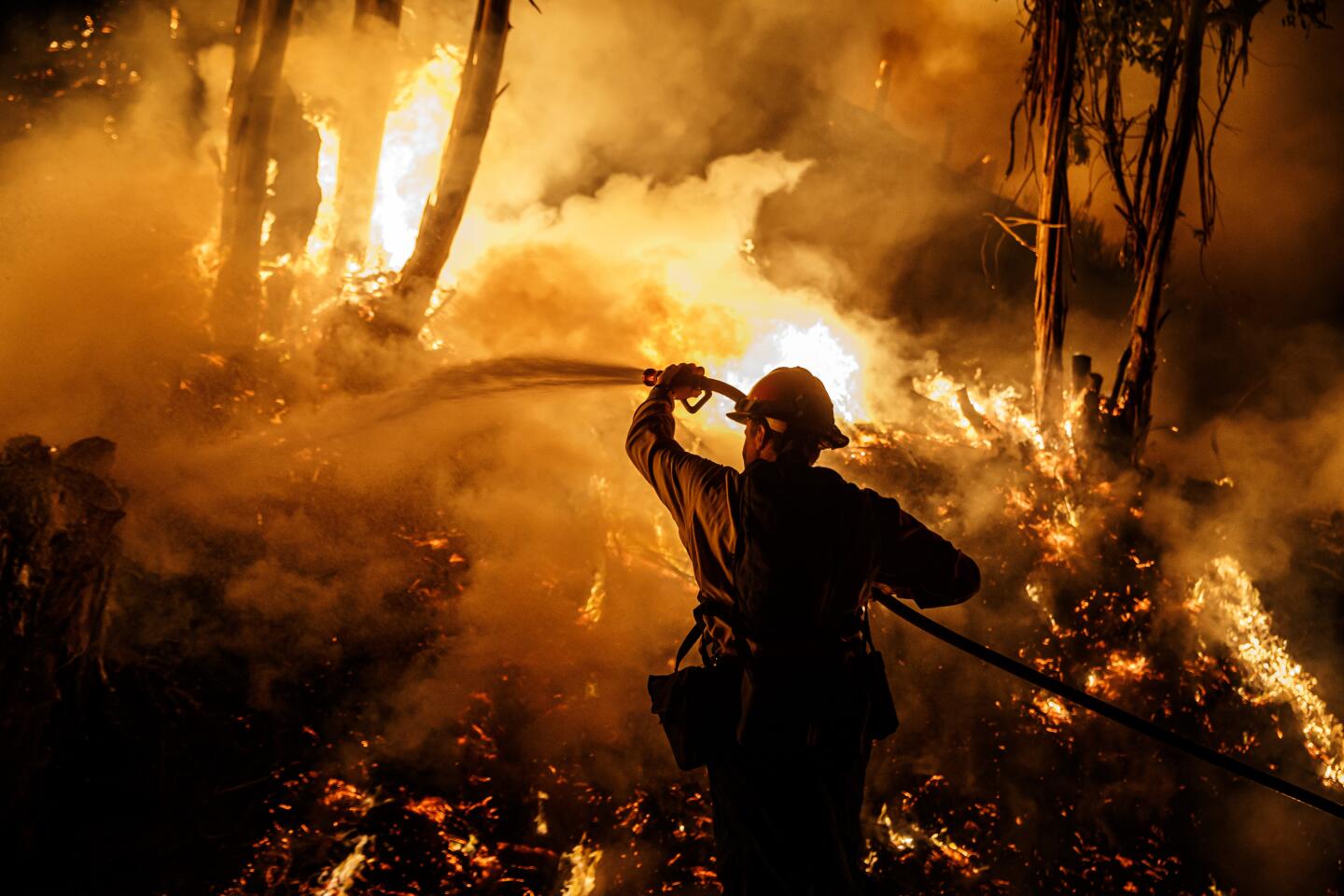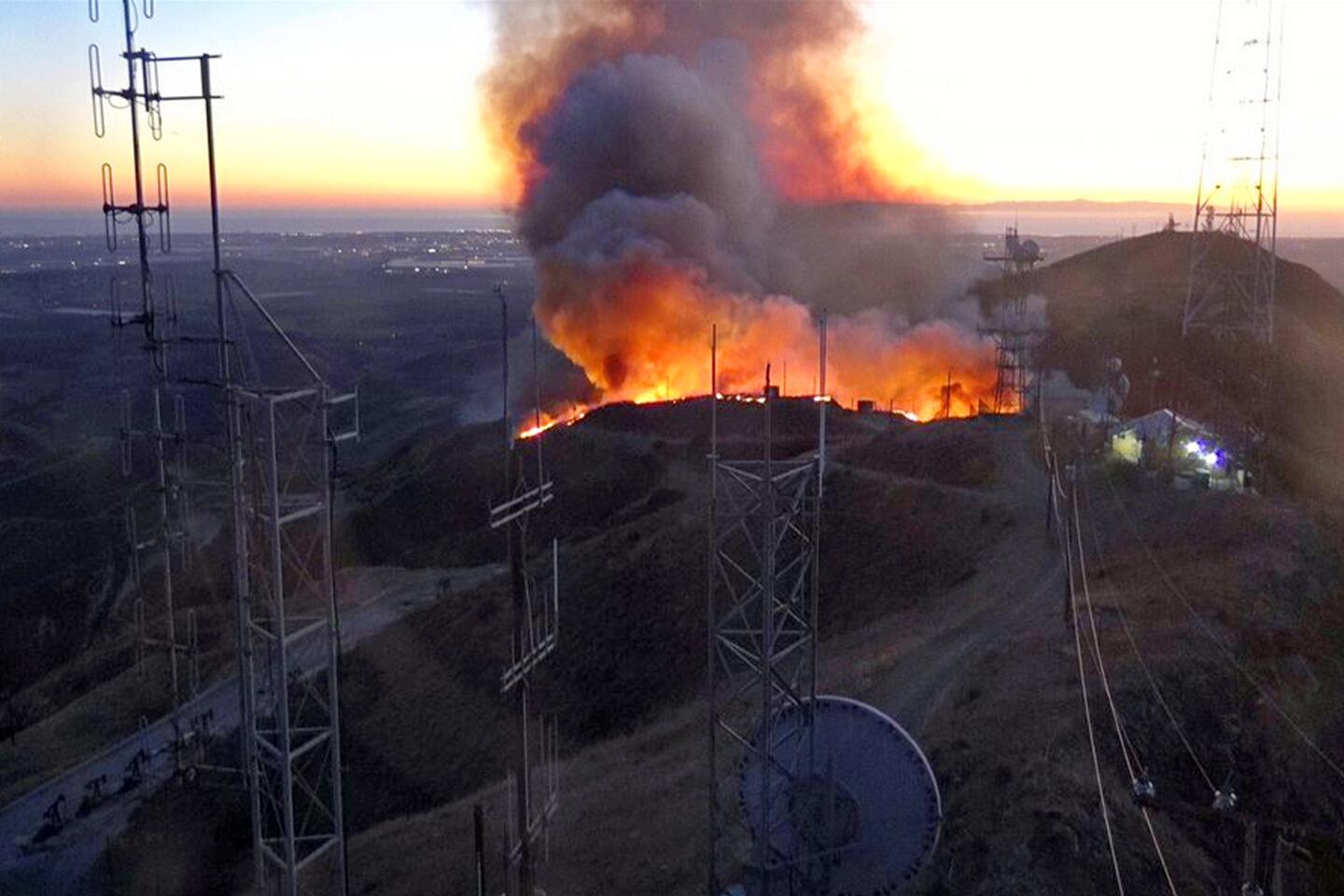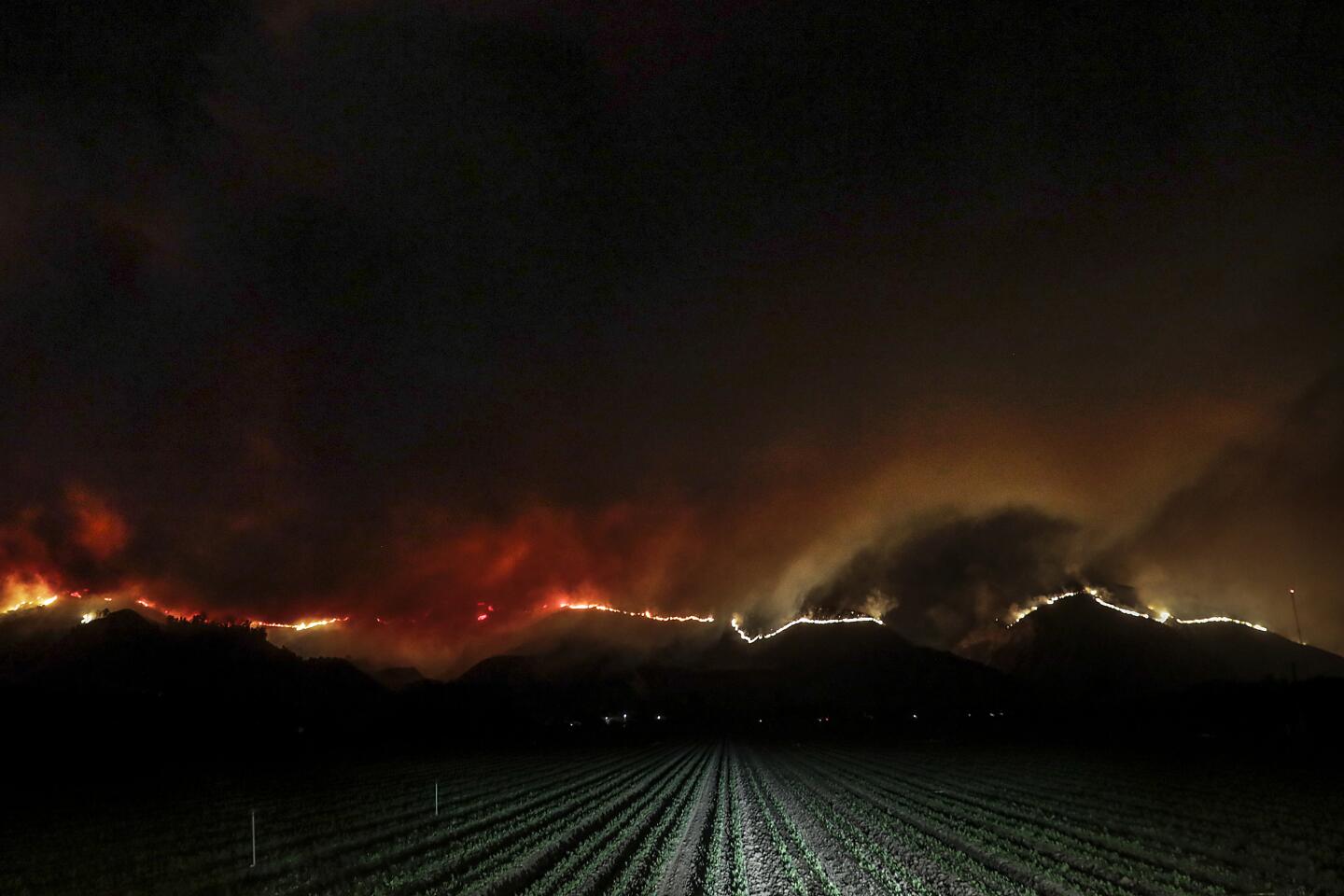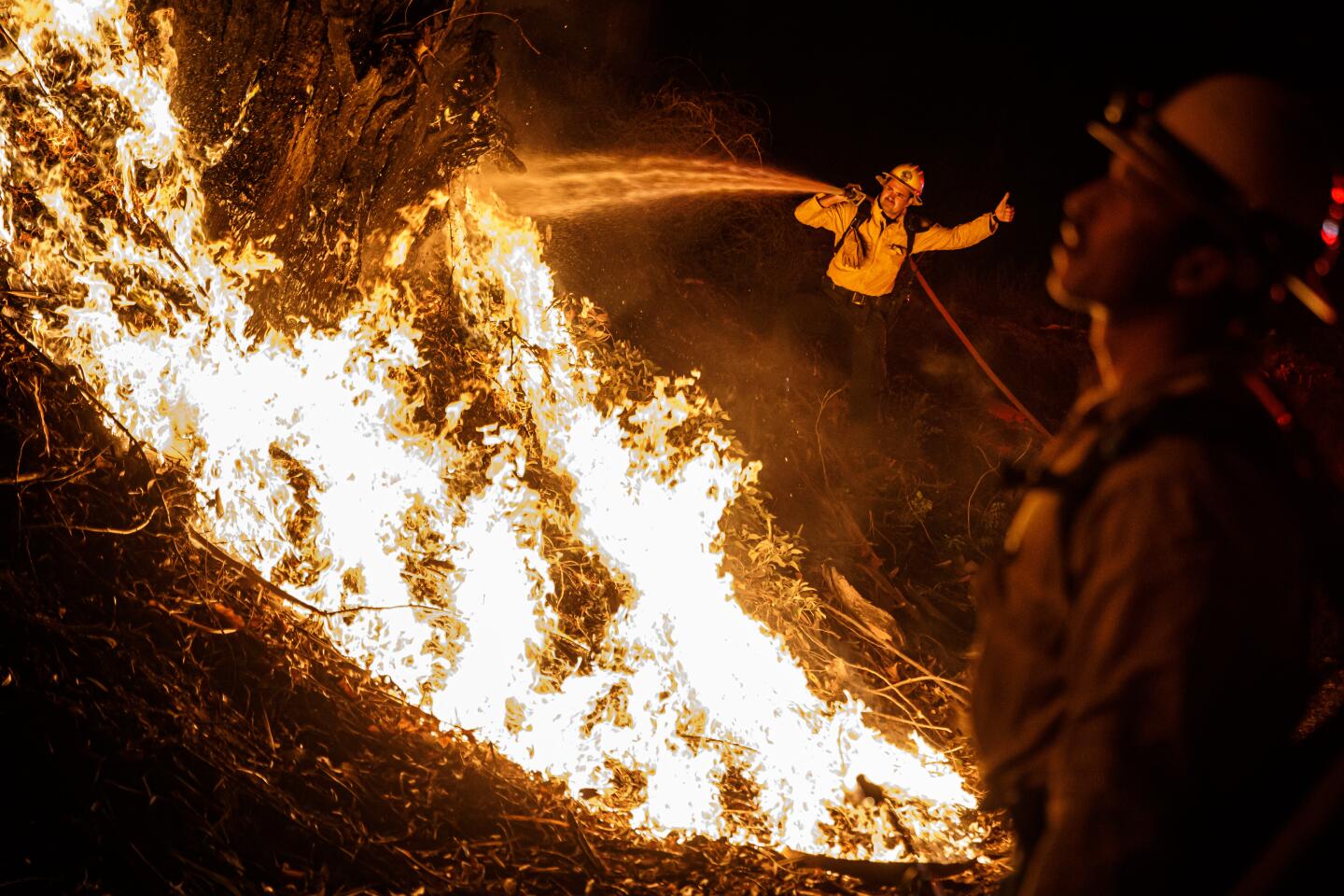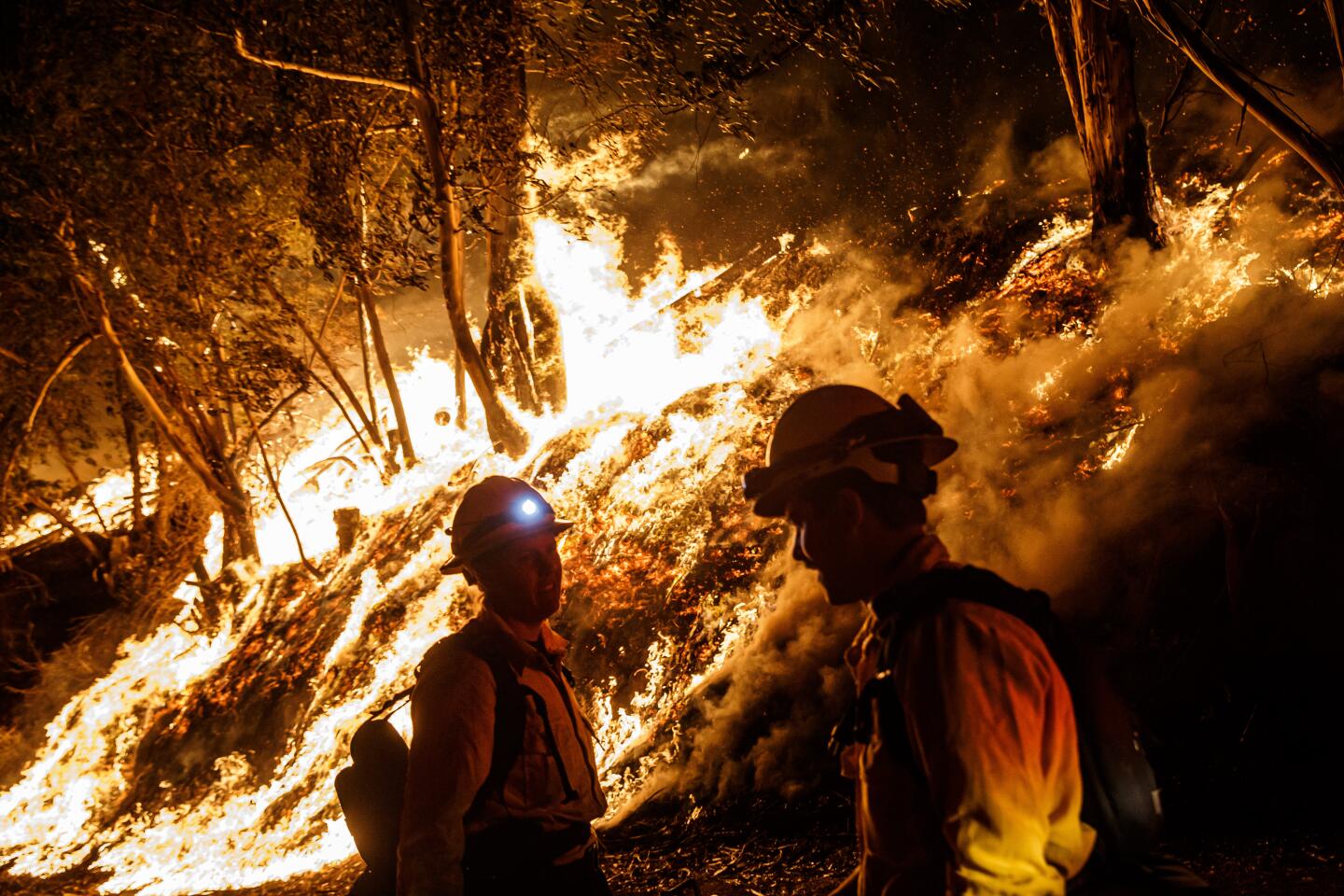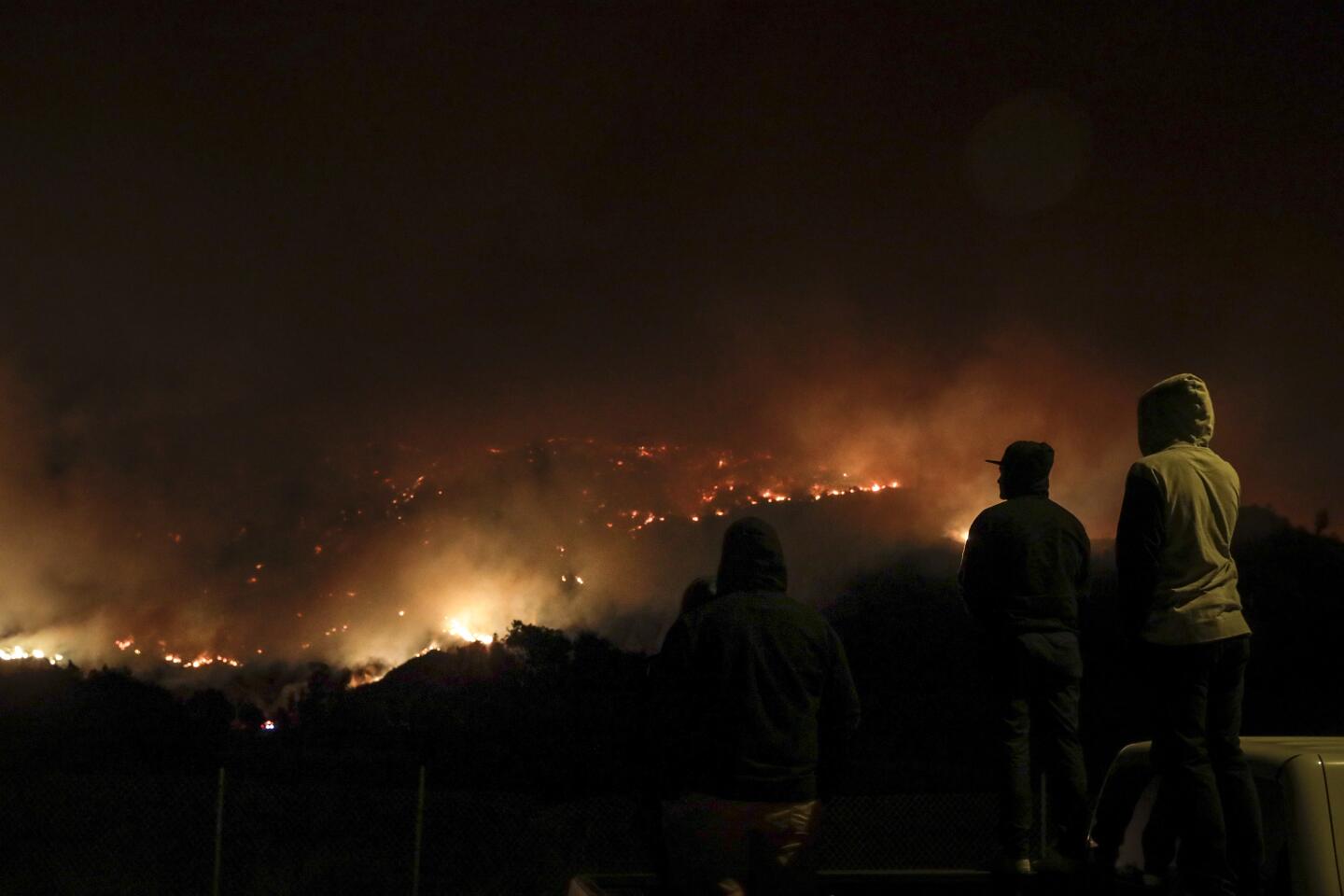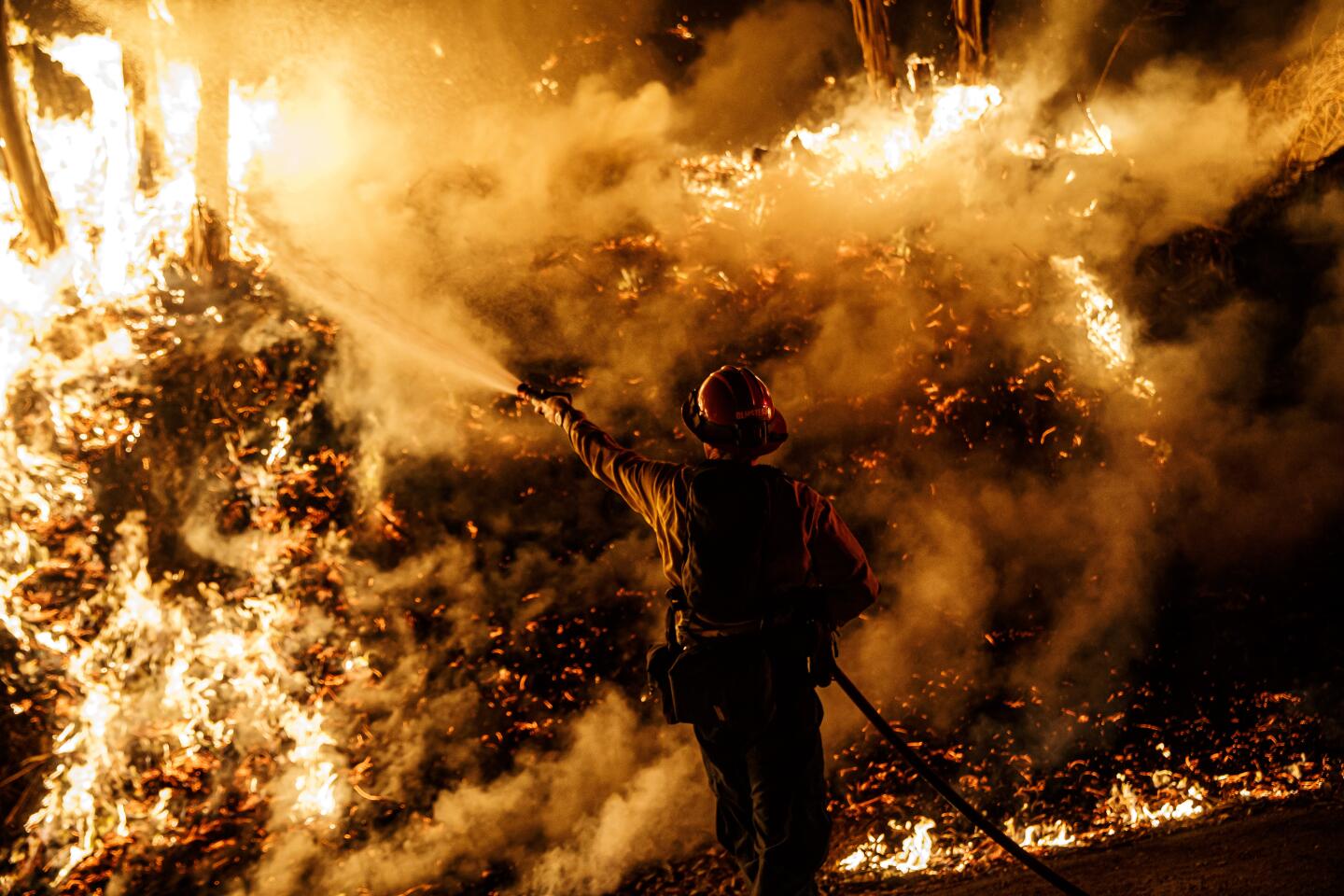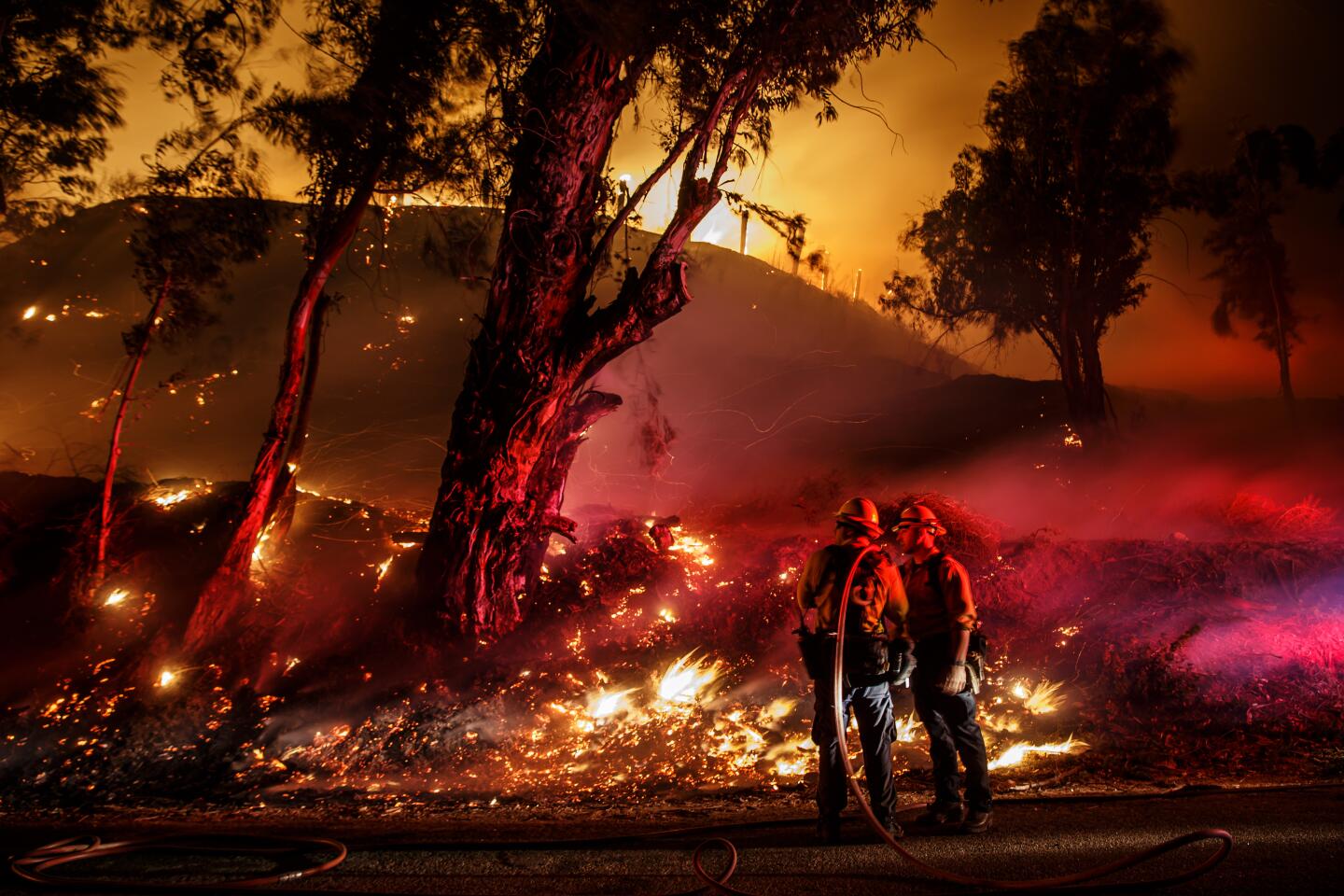Maria fire burns more than 9,000 acres; focus turns to Edison power line

- Share via
A large brush fire whipped by lingering Santa Ana winds made a run toward Santa Paula on Friday, burning toward neighborhoods just beyond the Santa Clara River.
The Maria fire broke out atop South Mountain, just south of Santa Paula, about 6:14 p.m. Thursday and quickly burned toward the small agricultural towns of Somis and Saticoy. By mid-morning Friday, the blaze — influenced by what fire officials called “battling winds” — changed direction, sending flames down the other side of the mountain toward neighborhoods in Santa Paula.
By Friday afternoon, the fire had calmed and the threat to Santa Paula had diminished. But the evacuations were still in place.
The cause was unknown. But Southern California Edison told regulators Friday that it had re-energized a 16,000-volt power line 13 minutes before the fire broke out. Edison had earlier turned off the line due to heavy winds.
The fire has burned 9,400 acres and had no containment as of early Friday afternoon. Fire officials say at least two structures have been lost in the blaze. However, there have been reports of other properties damaged.
“We are in the middle of a big fight ... and the end is not in sight,” Ventura County Fire Chief Mark Lorenzen said. “My request to the community is please stay active and engaged. Please have a plan and be ready to go at a moment’s notice.”
In one Santa Paula neighborhood, a man stood on his roof spraying his home with water from a garden hose as police and fire officials urged residents to evacuate. Others covered their mouths and noses as they fled to avoid thick smoke that choked the neighborhood.
“They’re on top of this,” said resident Elizabeth Sylvester. “They’re doing the best they can. I’m scared. This isn’t the first time we’ve been through this.”
Residents in Anacapa Mobile Park raced to fill their cars with anything that fit as flames licked the hillside nearby. People carried suitcases, garbage bags and boxes filled with blankets, clothes and food as firefighters and police scurried from door to door telling people to evacuate.
Two firefighting helicopters had to be grounded multiple times to avoid a drone whose pilot was apparently trying to snap photos of the flames.
Winneke Knuppel, who has lived in the mobile home park for 22 years, took down a slew of wind chimes on her property as she kept an eye out for her cat, Geronimo.
“I can’t leave until my cat comes back,” she said. “I can’t find him. I’m really anxious. I’m staying as long as I can.”
Roughly 2,300 structures are threatened, and 8,000 people have been evacuated. Mandatory evacuations remain in place for a swath of homes south of South Mountain Road, east of West Los Angeles Avenue, west of Balcom Canyon Road and north of the 118 Freeway. New mandatory evacuations have been ordered for the area south of the 126 Freeway, east of Campanula Avenue, west of South 12th Street/South Mountain Road and north of the Santa Clara River.
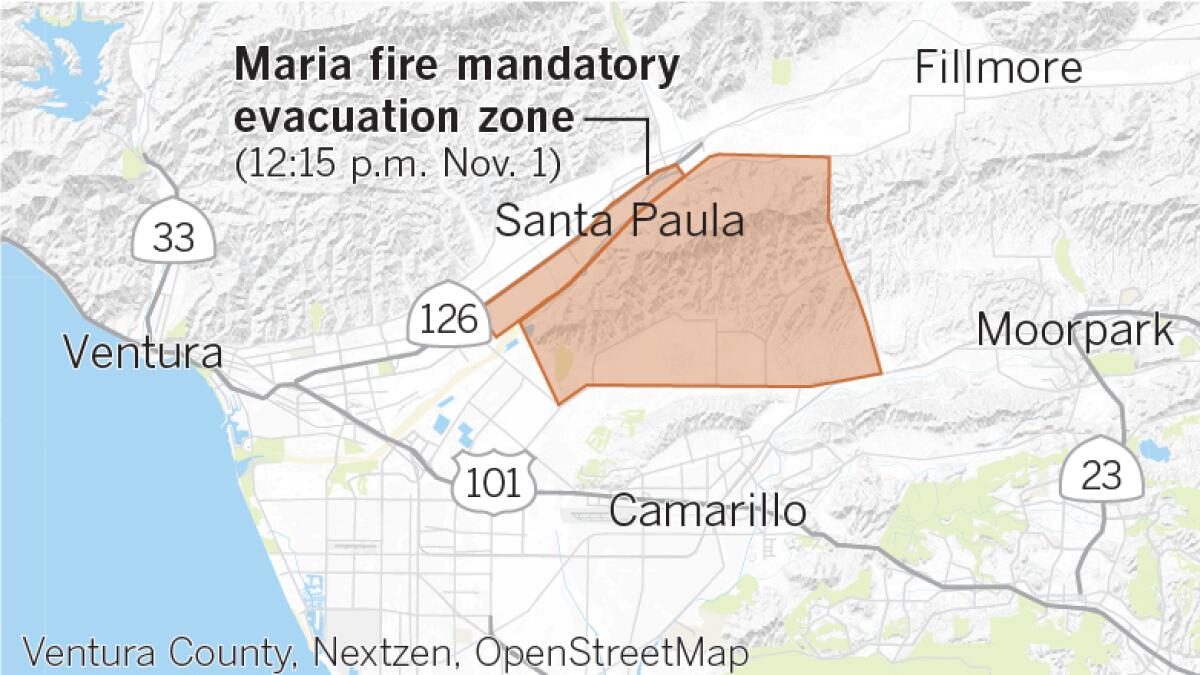
Shortly after the fire broke out Thursday evening, it made an aggressive march along the hillside, chewing through critically dry grass and brush. Aerial video footage showed at least one home burning along the southern flank of the fire, near La Loma Avenue and Center Road.
More than 500 firefighters battling the blaze took advantage of lower wind speeds overnight using a helicopter with night-flying capabilities and ground crews to beat back flames along the hillside in an effort to keep the fire from spreading toward homes or consuming nearby avocado and citrus orchards.
However, officials had to ground the chopper several times to avoid a drone that was flying in the area, apparently trying to photograph the blaze, McGrath said.
As the gusts began to pick up Friday morning, dozens of fire vehicles staged around homes along the rolling hillsides of West La Loma Avenue prepared to protect the properties from possible flare-ups. Agricultural employees, wearing masks, worked nearby in citrus groves.
Michael Minjares, who works in the agricultural industry, said he stopped his car to see how close the fire was to thousands of avocado trees near Briggs and Pinkerton roads early Friday. He worried that the strong winds would decimate next year’s crop by blowing the leaves to the ground or burning the trees.
“That’s a lot of avocados. That’s a concern,” he said. “You have crops in the hills on fire. Crop insurance is important.”
Minjares said the area on fire now is the only spot not torched by the Thomas fire.
“It’s makes you leery when thinking about it,” he said as three planes and two helicopters circled above.
Still, fire officials have said the blaze is nowhere near the magnitude of the Thomas fire, which charred a huge swath of Ventura and Santa Barbara counties in 2017, leaving a path of destruction in its wake.
“I want to assure you that this is not the Thomas fire,” Ventura County Fire Assistant Chief John McNeil said.
By 5 a.m. Friday, winds were still blowing from the northeast to the southwest, with sensors recording speeds about 18 mph and gusts up to 30 mph on the ridge where the blaze broke out. The fire area will continue to see similar wind conditions throughout the day, said Curt Kaplan, a meteorologist with the National Weather Service in Oxnard.
Here are evacuations, school closures and containment numbers for blazes burning across the state.
Forecasters are expecting afternoon sea breezes from the Pacific to make their first appearance since Tuesday.
“The strongest winds are behind us now,” Kaplan said.
However, the persistently dry air in the region may present the most pressing challenge for fire crews, Kaplan said. The relative humidity in the area remains a bone-dry 6%.
Ventura County is already dealing with the Easy fire, which started Wednesday and threatened the Ronald Reagan Presidential Library. That fire has burned 1,700 acres.
Santa Paula sits in the Santa Clara River Valley, among the most dangerous wind and fire corridors in Southern California. The river valley forms a wind-tunnel-like corridor, essentially connecting the high desert and the Santa Clarita Valley with the Oxnard Plain on the Ventura County coast between Oxnard and Ojai. The topography carries the potential for funneling severe Santa Ana winds.
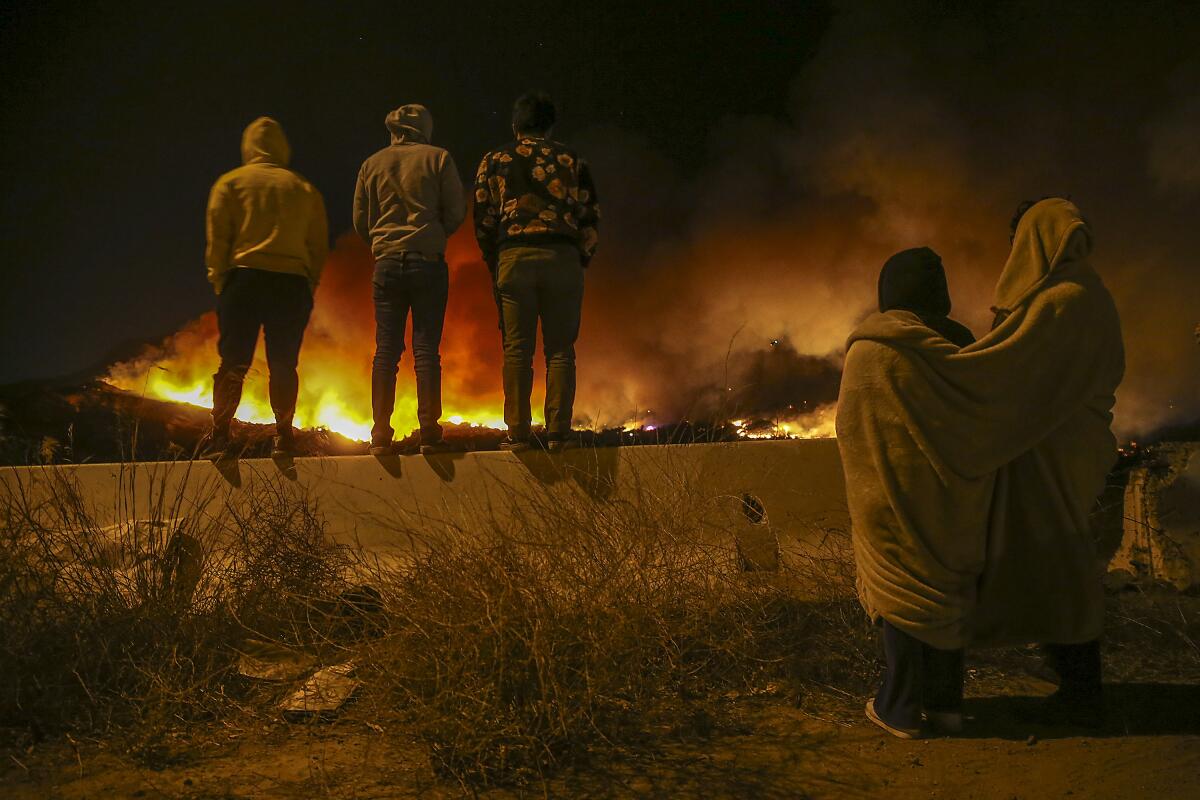
Toward the eastern part of that corridor, the recent Saddleridge fire was the third blaze near Sylmar in 11 years. Previously, the Sayre fire burned 11,000 acres in November 2008, and the monthlong Creek fire burned 15,000 acres in December 2017. That same month, the huge Thomas fire, at the western end of the Santa Clara River Valley, burned 280,000 acres in Ventura and Santa Barbara counties.
The Maria fire broke out as crews continue to battle multiple fires across Southern California, including fires in San Bernardino and Jurupa Valley that together burned hundreds of acres and prompted thousands of residents to flee their homes.
Critical fire weather is expected to remain in place for the windiest areas of Ventura and L.A. counties through at least Friday afternoon, continuing red-flag conditions for an additional 24 hours. Unless it’s canceled early, that would make this period of critical fire weather that began at 11 p.m. Tuesday at least 67 hours long. That’s an unusually long duration for such a red flag warning; most last one or two days.
The red-flag warning, which sounds the alarm for high winds, dry air and parched vegetation, is expected to persist for inland mountains in Los Angeles and Ventura counties, valleys in Ventura County and the Santa Clarita Valley through at least Friday evening because of ongoing winds from the northeast and very dry air.
There’s a possibility that critical fire weather could persist into Saturday.
Times staff writers Paul Duginski and Robert Gauthier contributed to this report. The Associated Press as contributed to this report.
More to Read
Sign up for Essential California
The most important California stories and recommendations in your inbox every morning.
You may occasionally receive promotional content from the Los Angeles Times.
